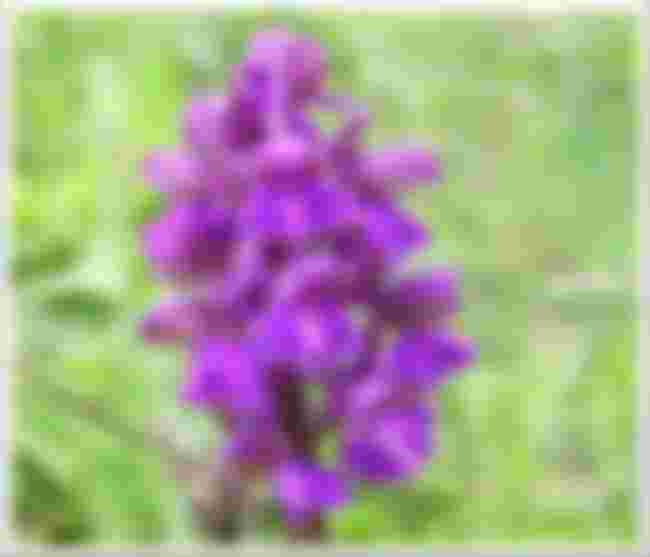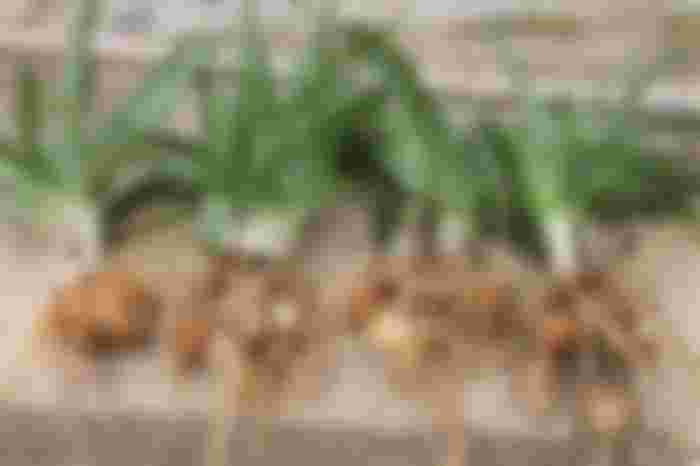Dear friend! 5.02.2021.
I will write to you about a hot beverage called SALEP and it is drunk in my area.The cradle of this drink is Turkey and it is drunk in Bosnia and Herzegovina, Macedonia and Bulgaria.I hope you enjoy the preparation of this drink and its taste.TURKEY IS HOME FOR 140 SPECIES OF WILD ORCHIDS.

Some of the scents and flavors of Turkey that tourists bring home are those from an aromatic cup of a hot beverage that wonderfully warms the hands as temperatures tirelessly drop.When orchids are mentioned we all think of flowers that grow mostly in the tropics. Turkey is the richest country in Europe and the Middle East in the number of species of orchids that grow in nature.

Of the 140 species of orchids that grow on the territory of Turkey, 40 are endemic orchids unique to Anatolia. A special type of orchid called Dactylorhiza Osmanica is used to produce salep.

The tubers of these orchids, which bloom red in May and June after drying in the Gumušhana region, turn into salep powder which is later cooked with milk and from which a warm salep is made.The importance of orchids in Turkey was first discovered and began to be cultivated en masse in the municipality of Elbistan in Kahramanmaras. Salep made from these orchids is drunk as a hot beverage in winter, while in summer it is used in the production of ice cream from Maraš and gives it a specific taste.

The species of orchids that grow in Anatolia were called salep or chalep. It is pointed out that the name salep originates from the ancient Anatolian languages and has the meaning to heal. Since orchids have been used for thousands of years to produce salep, which has been treated as both food and medicine, this drink is also called salep.Salep powder is the dried, ground roots of several species of wild orchid (or just the orchid tuber).

In our country, salep is prepared from dried, ground and processed tubers of Orchis morio. Kaćun, crow's onion, kukovec is a perennial herbaceous plant with an upright stem up to 35 cm high. The leaves are saber-shaped and juicy. The flowers are white or pink, gathered in a spike. It has two tubers. It grows in wet and dry places, in the mountains, by streams and on floodplain meadows.

This plant is protected. It would not be a problem to collect the tubers of kaćun in the right way: the plant is dug up, the young are cut off from two tubers, and the old ones return to the ground together with the plant. Thus, the plant does not decay, but re-creates a healthy tuber. And they say that for a kilogram of salep you need a thousand plants.
The preparation of salep, from the meadow to the cup, goes like this: the tubers are taken out, washed from the ground, cleaned of membranes and boiled briefly. They are then air-dried first, then in the oven, until they become almost crystal clear, and then powdered, sifted, and stored in a dry place.

At the beginning of the last century, salesmen could be seen on the streets carrying recognizable salep containers on their backs, which had two chambers, one for salep and the other for hot water.

The salesman carried a couple of glasses from which everyone drank, and after someone drank the salep, he immediately washed the glass with hot water. With the opening of confectioneries, street sales died down and every better confectionery had special cookers for making salep.

Medicinal properties of salep
In Turkey, salep is valued not only for its delicious taste but also for its health benefits.
Salep has been prepared since ancient times; even the ancient Romans enjoyed it, and considered it a powerful aphrodisiac. And the Swiss physician, scientist, and astrologer Paracelsus claimed that salep awakens a dormant passion.In addition to being fragrant, salep is also medicinal, and was used to restore the mucous membranes of the intestines and stomach, as well as to treat digestive problems and better sleep.Salep coats the damaged mucous membrane of the digestive tract with a protective layer that prevents further damage and allows the damaged areas to recover. And not only enables but also participates in the healing of the mucous membrane, strengthening the mucous membrane, the functional activity of the mucous membrane of the digestive tract.It helps in the treatment of ulcers and gastroenteritis, and is also used in the case of bronchitis…Since it belongs to the typical mucous herbal medicinal raw materials, pharmacies use them to prepare "salep's mucus", which can also be made at home. This mucus coats the mucous membrane of the digestive tract, creating a film that prevents and alleviates inflammation. It also soothes dry and irritating cough, is effective for inflamed gums, mucous membranes of the mouth and throat, and as a dressing cures ulcers and swelling.
Salep later settled in Britain and Germany, and over time he was pushed out by coffee and tea drinks. Thick and silky salep in Turkey can often be found in various variations.
Salep today
Unfortunately, the popularity of this delicious drink over the centuries has led to the decline of wild orchid populations in Turkey - so much so that the export of the authentic product and sales are now limited.However, due to the uncontrolled harvesting of salep, it is a protected species in many countries. Greece, Romania, Russia and Iran are in the lead in the export of highly valued tubers.

As a result, pre-packaged versions of salep containing other types of starch as thickeners have become popular in recent years.

These packages can be mixed with hot milk or water and can be found in markets across the country.
Instant salep with just pour hot water because it already has all the necessary ingredients. Pure salep is slightly more expensive, than 50 gr. you get 3 liters of this delicious drink.
It is prepared as follows:
Ingredients:
1 l of water (or milk)
1 tablespoon salep powder
sugar, cinnamon or ginger
Mix a spoonful of salep powder with a glass of lukewarm water so that there are no lumps. When the water in the pot boils, add sugar, boil for a short time, then add the whipped salep. Cook at a moderate temperature until a thicker, slightly slimy liquid is obtained. Be careful not to boil! It is poured into glass cups, and ginger or cinnamon powder is sprinkled on the surface.

Source Medicinal herbs
Photos taken from google














Never heard of this tea before so I'm curious what ot would taste like tbh